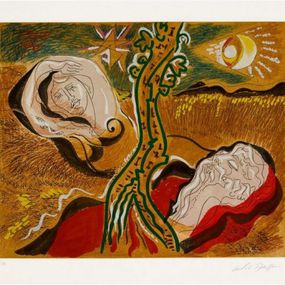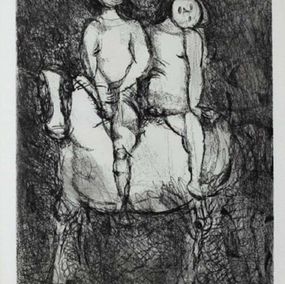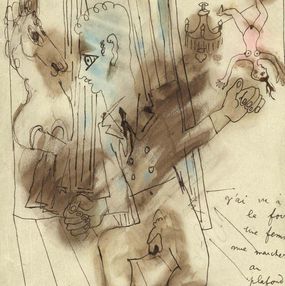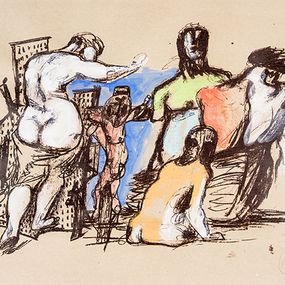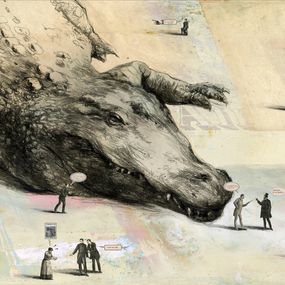
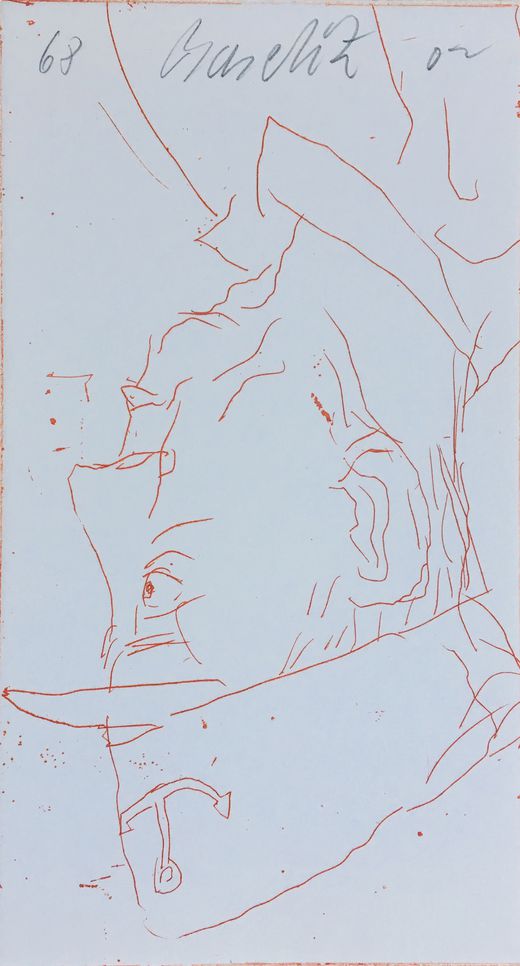
We are asking completely new questions, about images, about content and about the very substance of art.
Biography
Georg Baselitz was born Hans-Georg Kern on January 23 1938 in a fractious Germany. His father was a schoolteacher and as a child, he lived on the school grounds, where he discovered art for the first time while leafing through albums of 19th century drawings.
In 1956 he joined the Hochschule für Bildende und Angewandte Kunst in East Berlin, before being promptly expelled for 'socio-political immaturity'. He then joined the Berlin University of the Arts in West Berlin. It was there that he was introduced to the theories of Vassily Kandinsky and Kasimir Malevitch, and befriended Eugen Schönebeck and Benjamin Katz.
In 1961 Baselitz dropped his birth name and adopted his painter's pseudonym. As a tribute to his home town Deutschbaselitz (Saxony), he started signing his paintings with the name Baselitz.
His first solo exhibition took place in Berlin at the Werner and Katz gallery in 1963. During it, two of his paintings, Die große Nacht im Eimer (The Big Night Down The Drain) et Der nackte Mann (The Naked Man), were seized on the grounds of obscenity and indecency. A lengthy court case followed, which eventually resulted in the return of the works to the artist, who had greatly benefitted from this newfound notoriety.
1969 marked a turning point in Baselitz's artistic career. Indeed, following a period of experimentation where Baselitz cut his canvases into strips, he decided to turn them upside-down. This would become his signature style and a means for him to question the limits between figuration and abstraction.
Several years later, Baselitz exhibited his first sculpture Modell für eine Skulptur (Model for a sculpture) at the Venice Biennale in 1980, which caused great controversy.
Georg Baselitz is considered, with Markus Lüpertz, to be one of the precursors of German neo-expressionism. This artistic movement was born as a reaction against new means of expression such as arte povera, conceptual art, performance art, and land art, in favor of a 'return to painting'. From 1980, Baselitz concentrated on this medium. His models were consigned to the background, set as a simple motif rather than the real subject of the canvas.
Today, Baselitz is one of the most highly regarded artists in the art market.
Nationality
Categories
Artistic movements
Themes







